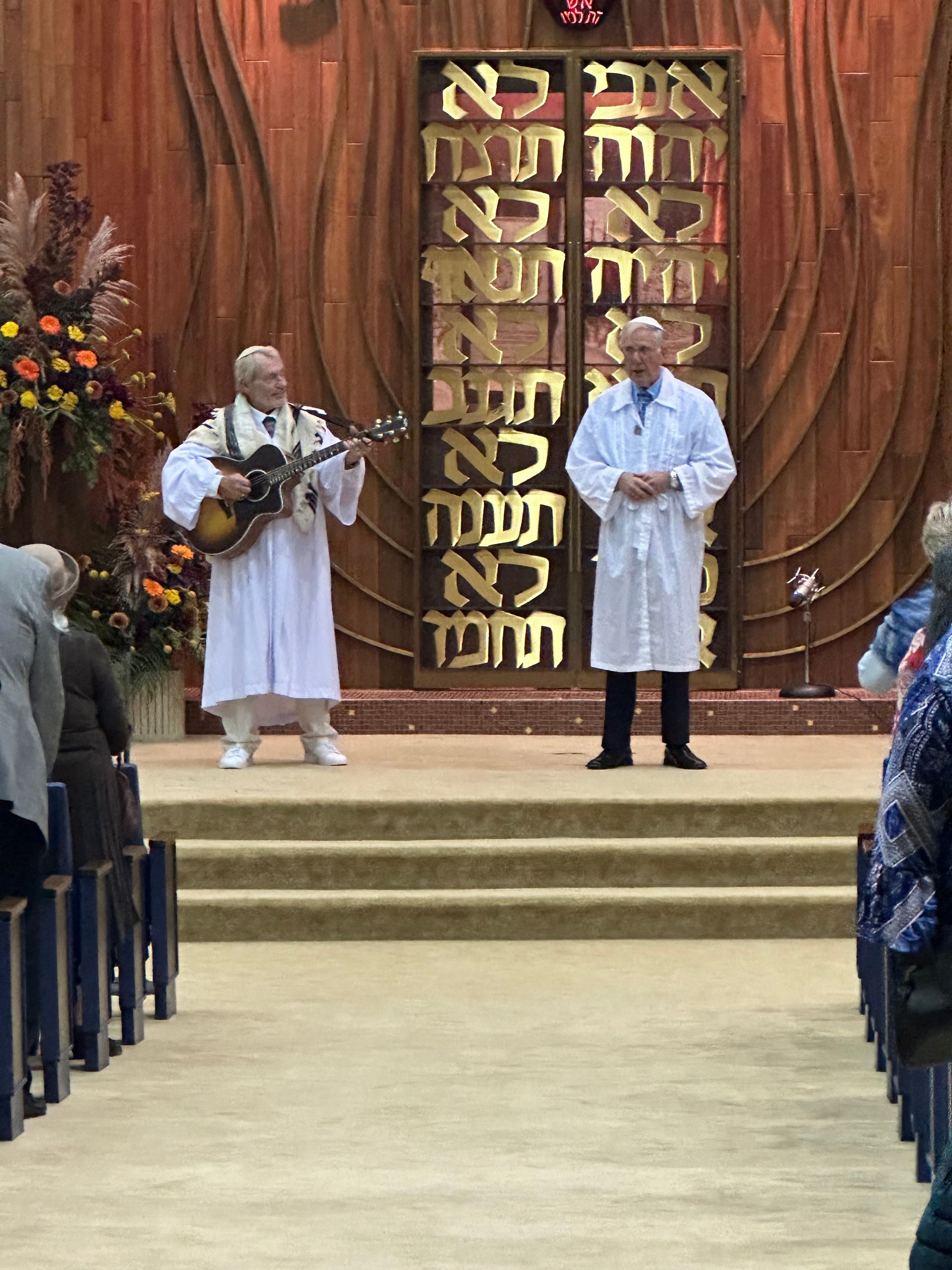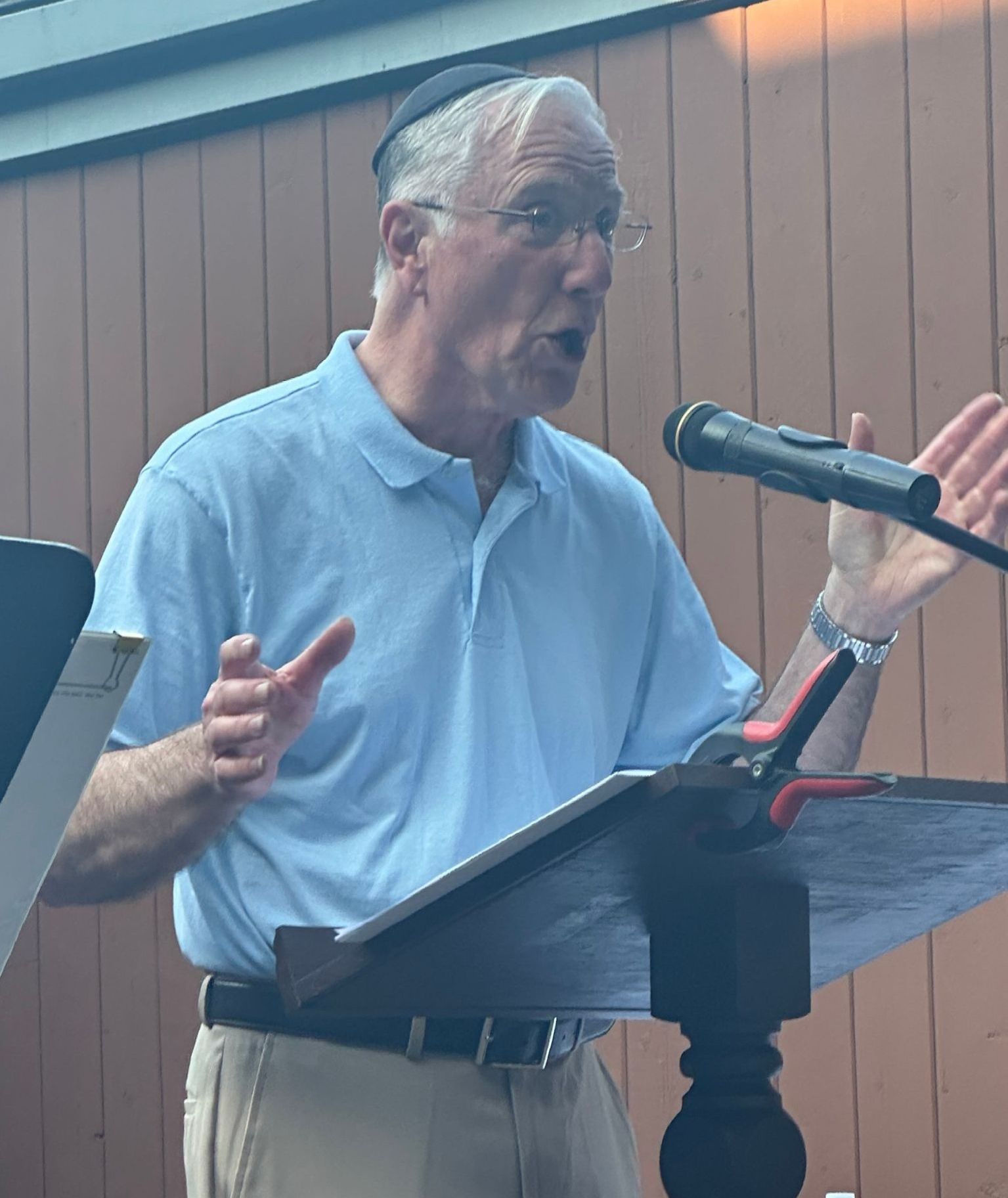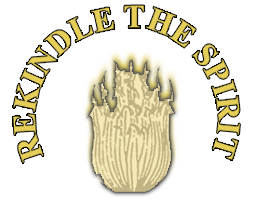Rabbi
From My Desk 2025-12 Happy Holidays/ Serious Memorials
On Saturday night, November 8th, Apollo’s Fire Baroque Orchestra and Chorus presented a moving tribute. Jeannette Sorrell, Apollo’s Fire brilliant conductor, wrote, “This Requiem Concert is dedicated in memory of all the innocent victims- especially children - who have perished this year in conflicts around the world.”
The program consisted of serious musical works, including selections from Mozart’s Requiem, An African American Requiem (by Damien Geter), An Ancestor’ Requiem (by Eric Gould), Five Freedom Songs (by Jessie Montgomery), and Voices of 1791 (by Jeannette Sorrell).
To be fair, the program was entitled, Mozart Requiem and Exsultate, jubilate. David Walker, managing director of Severance Music Center wrote, “...our featured composers’ evokes personal journeys through grief, to hope, to joy.” Clearly, this was not to be a presentation of only lugubrious music, designed to evoke tears of sadness. Rather, it was designed to reflect sadness, then provide relief, and propel listeners to hope, and then to joy.
It was a stellar concert. The energy, timing, and heartfelt efforts of singers, musicians, and conductor were palpable. It was a musical tour-de-force.
And, yet, I left the concert with a strange feeling that something was amiss. Hundreds of attendees- some dressed in their finest -sat in comfortable chairs in Severance Hall, thrilled by the music. At moments of deep emotion (including moving renditions of elegia) the crowd applauded the chorale and singers. At the conclusion of the concert, the crowd erupted in a standing ovation, with cheers and whistles filling the auditorium. There was no doubt the audience had heard a world-class performance.
What could be amiss? The concert was in memory of tens of thousands (perhaps more, given the underreported conflicts around the world) of innocent victims who had died cruel deaths. And the audience had spent two hours in airconditioned comfort, some even imbibing cocktails and other pleasant drinks at the intermission, enjoying an evening of "entertainment”. Was this a proper way to remember innocents who have died as a result of conflicts and wars? Would the innocent victims have been pleased to know that audience members enjoyed great music, with drinks available, and then left the hall for perhaps a late night dessert at a cafe? These are haunting questions.
Yet another event this past week made me uneasy. A Holocaust education group invited the public to join them at a dinner. The purpose of the event was to highlight the vital work that this group does, and to persuade others to support it. Indeed, my father-in-law (obm) was very active in this very group, and helped launch it 65 years ago.
The dinner was held at a synagogue, and, while the food was quite good, it was not an “over the top” menu, as is sometimes the case with catered events. Certainly, simpler food was entirely in order. Remember that Holocaust prisoners would never have eaten anything close to even the simple, but fine food that was served that evening. One could suggest that any event related to the Holocaust should not involve food at all. But, let us not be too self-righteous.
However, a comedian had been invited to entertain the guests. Leaving aside the propriety of some “off-color” jokes, the whole idea of a comedian appearing at a Holocaust education event seems to be incongruous, at best. Again, I do not wish to sound sanctimonious. Yet, again, the question is haunting. What would Holocaust victims have said, had they been told that 80 years after Auschwitz, Jews would assemble for dinner and jokes, in order to emphasize the importance of Holocaust education?
I write these words not to castigate anyone in particular. Indeed, I have great admiration for those who work hard to keep the memory of the Holocaust alive, and educate the next generation about our need to be ever vigilant. I have tremendous regard for musicians who seek to express raw emotions through music.
But, I can’t help but feel that innocent victims would not find comfort in knowing that after their deaths, concerts with drinks will be held in their memory. That comedians will tell jokes at commemorative events. Perhaps I am too sensitive about the whole thing. But, I’d like to think that when innocent Jews die, my people will never joke at their memorials, or vigorously applaud music played in their memories.
On the other hand, Jews are known as comedians and humorists. And that’s great. Perhaps the time and place for applause and jokes should be better timed. Like, for example, Hanukkah. Our tradition has established as a delightful holiday the victory of the Jewish people over assimilation. I’m all for that. Music, singing, applause and joking are all in order. Let’s enjoy it !
Please accept my best wishes for a Happy, musical, and light-filled Chanukkah!






